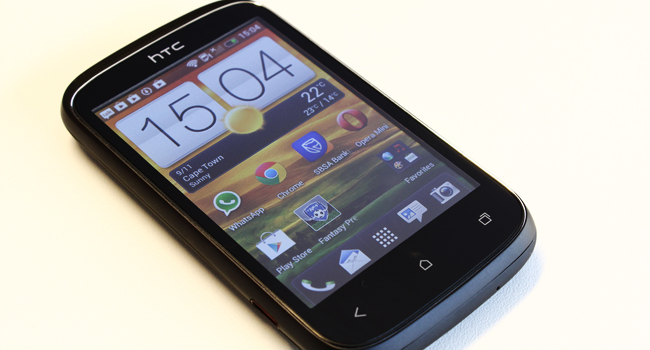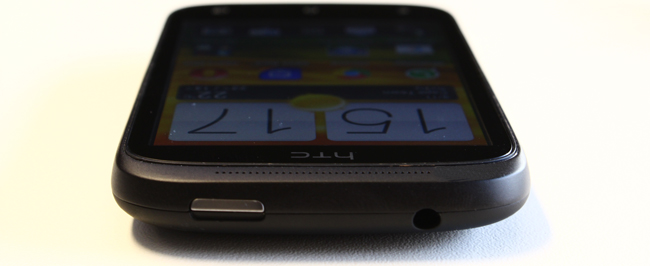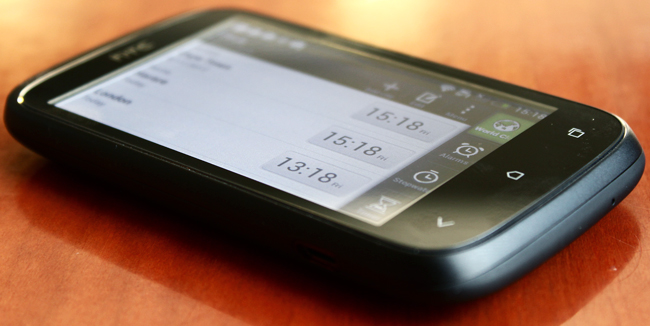Four young scientists, accompanied by Eskom Expo’s Business Manager, Mmamoloko Rancia Riba, won their place to represent the country at the Indonesia competition, renowned…
HTC Desire C: a decent little budget Android


The HTC Desire C is an odd creature. Its looks are reminiscent of the higher-end devices in HTC’s smartphone alphabet, and it runs the same version of Android that comes pre-installed on flagship phones like its big brother, the One X, and Samsung’s Galaxy S III. Yet the phone is a chubby little plastic construction that creaks when you squeeze it too hard and the fixed-focus camera makes anything you photograph look un-artistically blurred.
But it’s not trying to be a super phone — it’s a humble entry-level smartphone which packs a surprising amount of features into its pebble-shaped package.
Overall design
Measuring 107.2mm x 60.6mm x 11.95mm, the Desire C is a compact phone that fits comfortably in your hand without compromising so much on screen size that it will make your life difficult when you’re trying to type a message. It weighs next to nothing (98 g) and is encased in black plastic with a thin silver ring around the screen and red accents in the Beats audio logo on the back of the phone, the plastic surrounding the micro USB port and the ring around the camera. There’s also a hair-thin line between the battery cover and front of the phone that snakes around the edges of the device and strategically curves in a gentle wave, just to show the device is not all about straight lines and no flair.

It’s a sturdy enough construction, although it’s relatively easy to take a chunk out of the plastic: one drop onto a tarred road or a particularly tight encounter with your keys, and you’ll be looking at the marks until your next upgrade. But overall, it’s a nice, palm-sized alternative to the more gigantic phones on the market which wouldn’t fit as easily into your pocket.
Performance
While most budget Android are almost guaranteed to be running ridiculously out-dated versions of the OS like Gingerbread or even (shudder) Froyo, the Desire C breaks the stereotype with out-of-the-box Ice Cream Sandwich (Android 4.0). Yes, you can usually eventually upgrade to ICS on other entry-level models, but with all the fragmentation issues, it’s nice to have a more modern OS. If you’ve never played around on a phone with ICS or above before, you’ll soon appreciate the little things this HTC lets you do that make things a bit easier, like the swipe to clear notifications function. The phone also features one of HTC’s newest additions to stock Android, Sense 4.0.
Here’s the downside: the device is powered by a 600 MHz CPU. Let’s put that in perspective: the two-year old BlackBerry Curve 9300 has a 624 MHz CPU, and the super-budget Samsung Galaxy Pocket has a 832 MHz CPU. While it’s not a huge problem for most day-to-day functions, you’ll notice the lack of speed in small ways. Menus and apps take a few seconds longer to open than they should and when you unlock it, HTC’s signature clock widget will display the time you last used the phone (just for a second) before it switches to the current time. If you’re the walk-and-text-and-scroll type, staring at a white screen waiting for Twitter or Instagram to load while you’re switching between Gmail and Facebook, these slight delays may start to annoy you.
Display
While a pixel density of 165 is not going to make your eyes burn in pain, it’s not bad for the price (which is around US$240). Just because it’s not Retina Display doesn’t mean it’s a low contrast, under-saturated display either. The 3.5-inch, 320 x 480 pixel screen reproduces colours really well, even in direct sunlight.

Keyboard and memory
The Desire C has a capacitive touchscreen which, when used in conjunction with all the helpful software additions (c’mon, it predicts your email domain!), is generally quite responsive — although it occasionally misses your taps if you just lightly graze the surface of the glass. It has 512 MB of RAM and 4GB of on board storage – unfortunately, less than a gig of that is actually available for you to use. But it’s all expandable — you can pop in a microSD card for up to 32 GB more space, or signup for 25GB of free Dropbox storage for two years.
Camera
I regret to inform you that even though the Desire C has a 5 MP camera, it needs a smack in the face with a chair. Ok, so I may be exaggerating… but it doesn’t automatically focus, which makes all those extra pixels useless. Who needs 2592 x 1944 images when they’re always blurred? The lack of autofocus and a touch-to-focus option may not be a deal breaker for some, but it’s one of the absent features that reminds you that you’re holding a cheap phone.
Close up images are a write-off, but distance shots in full to partial sunlight are fine as long as you don’t try to zoom in and check the clarity. It’s also surprisingly quick on the uptake as the camera is quite comfortable with point-and-snap shots and doesn’t take more than a split second to capture the image. But it doesn’t have a flash and there isn’t a front-facing camera either, and video shoots at 640 x 480 pixels.
Data, phone and battery
The phone’s 1230 mAh battery is quite an overachiever, lasting more than a day without hassle, even when constantly connected to the nearest Wi Fi router. The phone also has WiFi hotspot capabilities and is NFC enabled (depending on operators and location).
Conclusion
While this phone isn’t going to win any awards for speed or photographic excellence, it is still a remarkably decent device – and the fact that it runs Ice Cream Sandwich is a major draw point over other Androids in its price range. The HTC Desire C is a fantastic little beginner smartphone for those keen to ditch their feature phones or an easy to use device for those obsessed with social apps, email and web browsing. Gamers, amateur photographers and heavy multitaskers should look elsewhere.

